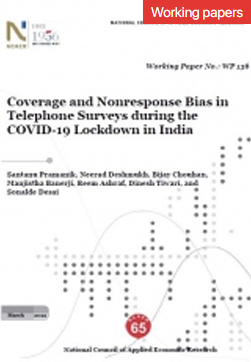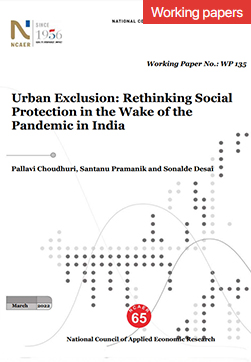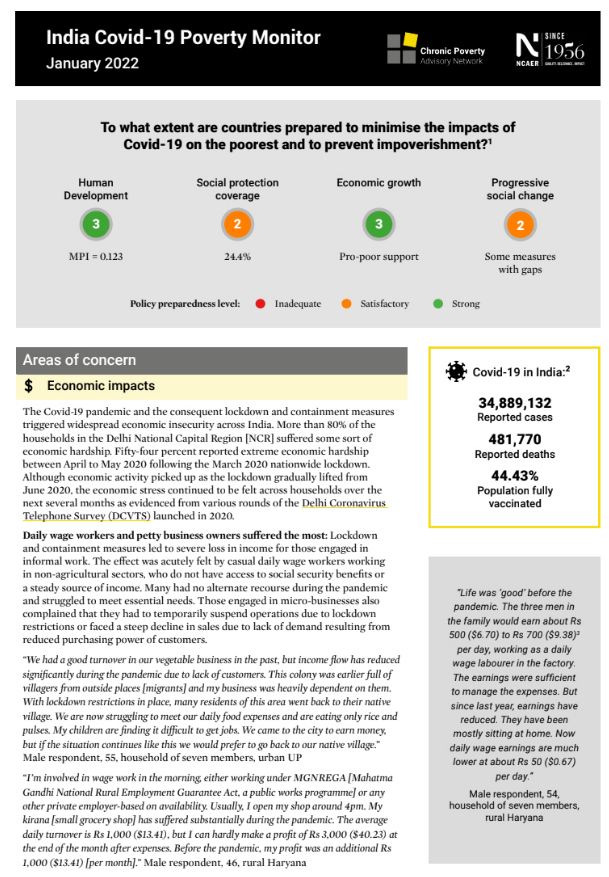
In the wake of the COVID-19 pandemic, telephone surveys have been used extensively for carrying out studies on health knowledge, morbidity, and mortality surveillance. In order to understand the extent of different sources of non-observation errors in telephone surveys, we compare the distributions of units covered in the sampling frame and survey respondents with those who were excluded from the sampling frame and survey nonrespondents, respectively. The distributions are compared with respect to key socio-economic and demographic characteristics, which are often associated with most health outcomes for two different study designs, viz., panel surveys and repeated cross-sectional surveys.

Several changes may have taken place in the lives of Indian women but gendered realities continue to reflect in their status in a family every day.

The COVID-19 pandemic, and the consequent nationwide lockdown in India that began on March 25, 2020, caused a major disruption in the labour market, leading to the widespread loss of livelihoods and food insecurity. The findings from a telephonic survey of a representative sample of more than 3,000 households in the National Capital Region (NCR) also reveal a dramatic loss in earning capacity. The place of residence and occupation mediated the impact of the lockdown, with greater vulnerabilities witnessed amongst those engaged in informal employment, especially in urban areas. The Government rolled out a series of welfare measures in response to the widespread economic distress, with the provision of free foodgrains and cash transfers aimed at rehabilitating those who were the most affected. While the use of prior social registries enabled quick disbursement, our analysis points to the presence of unmet need, with such exclusion being exacerbated in the urban areas. The findings also reveal that the likelihood of receiving benefits increases with improvements in targeting at the local level and is vital for building social registries.

Sonalde Desai writes: It is time for us to focus on empowering all women, including Muslim women, by ensuring their access to education, employment, and public safety.

India Covid-19 Poverty Monitor bulletin is compiled by NCAER National Data Innovation Centre and The Chronic Poverty Advisory Network (CPAN) hosted at the Overseas Development Institute (ODI) in London, using a combination of original qualitative data collected from a small number of affected people in India, interviews with local leaders and community development actors, and secondary data from a range of different sources.










